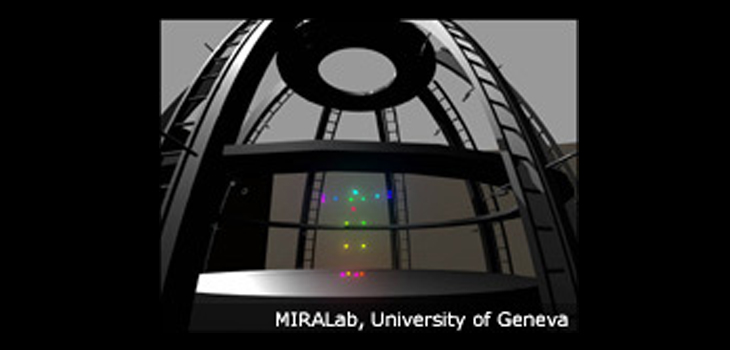
MELIES – “Modelling Equipment for Live Interactive Electronic Streaming “
Overview
MELIES explores an innovative way to capture and synthesize motion using the power of computer graphics and computer vision based techniques. Rather than adopting the geometric processes that is typically used for computer animation, MELIES delves into image analysis of objects or real actors to assemble the components for a “realistic” 3D reconstruction. MELIES utilises digital processing of video sequences acquired from multiple cameras, arranged in a specially designed “Cyberdome”.
As acting is the central element in any dramatic production, MELIES concentrates on human modelling. The resulting virtual humans must have a realistic appearances and behaviours. The realism of the human is not limited to the human body alone but also the clothing. The existing human modelling and motion capture tools are extremely time-consuming to use. These tools do not allow the synthesis of other actions whilst maintaining the characteristic movements of the particular actor; MELIES intends to overcome this limitation.
The goal of MELIES is to provide new technologies for the creation of photo-realistic clothed human characters from video sequences. The 3-D models will contain all the information required to animate them within a virtual environment.
MIRALab’s contribution
The main contributions of MIRALab to the MELIES project are as follows:
Realistic Motion of Clothes on Actors (WP5 Leader): The existing techniques for modelling and simulation of clothes are computation intensive and hence time consuming. Therefore it is not still possible to realize real time simulation of clothed characters. MIRALab will be developing software that enables real time visualization of the human characters with complex clothing including clothes like skirts, which exhibit flowing behavior. The work involves developing: optimise collision detection algorithms to enable simulating cloth interaction with other regions of clothing and with human body, geometric deformation and wrinkling of clothes, and a representation of clothing that allows real time simulations.
Integration (WP7): MIRALab also has an important role in the integration of the software developed by it into the rest of the software developed as part of the MELIES project by the other partners in the project.
Partners
Ecole Polytechnique Féderale de Lausanne, Virtual Reality Laboratory (VRLab)
Switzerland
vrlab.epfl.ch
Ernst Klett AG
Germany
www.klett-verlag.de
Giunti Multimedia srl
Italy
www.giunti.it
MIRALab, University of Geneva
Switzerland
www.miralab.ch
The University of Surrey
Great Britain
www.ee.surrey.ac.uk/Research/VSSP
XD Productions
France
www.xdprod.com
